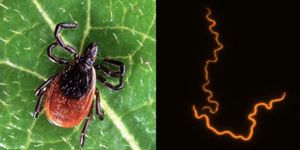Ecosystems are particularly delicate, and any changes to the careful balances that mother nature had in mind for a specific region can impose severe burdens on local ecosystems. One such example is the introduction of non-native species, which often become invasive and wreak havoc on their surroundings.
Invasive species can be any organism, including animals, bacteria, insects, or plants, and they can impose severe threats to an ecosystem of any size. In most cases, an invasive species will throw natural resources in an ecosystem out of whack, essentially causing a domino effect for other organisms in proximity.
For example, invasive plants may sop up all the water in the soil, killing other nearby plants in the process. Alternatively, invasive animals might wipe out a key player in the local food chain, which consequently impacts the survival of other animals. In many cases, invasive species can cause serious conservation concerns for native species.
It’s possible to prevent invasive species from being a thing, but this requires that humans be mindful of the issue at hand and avoid releasing animals in their unnatural habitats. Some people do this unintentionally, not understanding the risks involved, but others understand all the risks and continue to dump invasive species into the wild at alarming rates.
If we aren’t careful, invasive species could wipe out much of the beautiful nature that the world has come to know and love.








